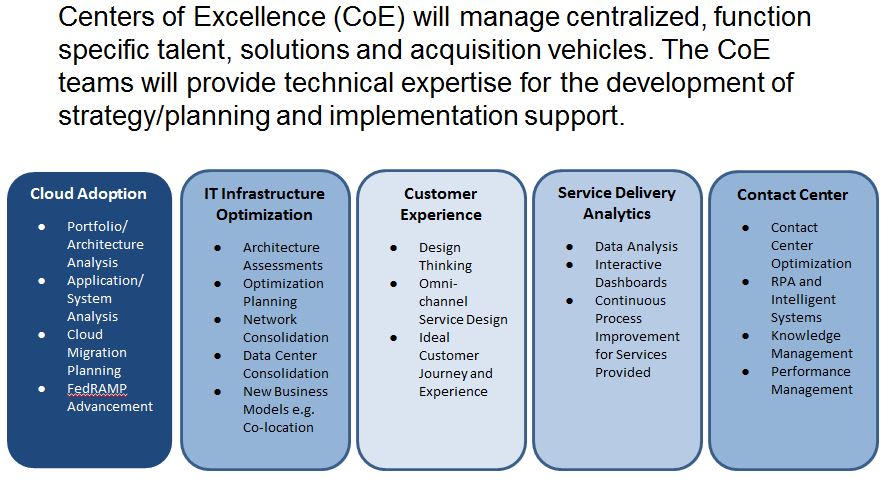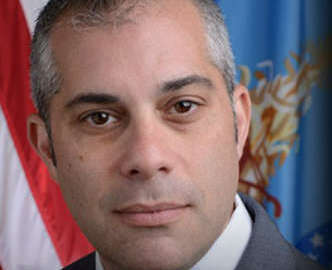
White House sending teams of experts to modernize agency IT systems
USDA will be the first agency to work with GSA and the Office of American Innovation to get rid of legacy systems.
The Trump administration’s plan to modernize and secure federal IT systems and data came together this week.
The latest piece of the trifecta dropped Thursday as the White House’s Office of American Innovation detailed its centers of excellence (CoE) initiative to take on the infrastructure and legacy systems challenge.
Earlier this week, two other significant pieces fell into place when President Donald Trump signed the Defense Authorization bill, which included the Modernizing Government Technology (MGT) Act, and the White House released the final version of its IT Modernization Strategy with 50 recommendations.
“In the new year, we will be launching the IT modernization centers of excellence to start putting these recommendations into action,” said Jared Kushner, a senior adviser to the president, during an industry day in Washington, D.C. “With help from industry partners and our own federal IT teams, we have identified those key areas that have the greatest opportunities and need for centralized talent, process and acquisitions support vehicles. These teams will be based in specific centers of excellence, and focused on our immediate priorities, that you will hear more about today. In particular focus we are going to work with a series of lighthouse agencies on top priority projects that will include: cloud adoption, IT infrastructure optimization, customer experience, service delivery analytics and contact centers.”
Each one of these is a piece to the puzzle to solving this longstanding IT modernization challenge.
The MGT Act will provide a vehicle to pay for these efforts by establishing working capital funds in each agency. The law also will set up a central fund that can be used for cross-agency projects. Congress has yet to meet Trump’s $228 million request, but White House officials remain optimistic.
The IT Modernization Strategy is the roadmap to address the “plumbing” issues as agencies continue to spend 71 percent of the federal IT budget on legacy technology.
Finally, the CoEs become the planning and implementation pieces to all of these efforts.
The General Services Administration’s Technology Transformation Service will lead the creation of the CoE teams around five areas:
- Cloud adoption
- IT infrastructure optimization
- Customer experience
- Service delivery analytics
- Contact centers
“We are going to have subject matter experts in each of these teams … from industry, from research firms and from federal employees,” said Joanne Collins Smee, the acting director of TTS at the White House event. “Part of the activity is to build best process. So it’s people, it’s process and we will have acquisition vehicles as part of this. We are not building, we are buying. We want our teams to be doing technical assessments, strategy and planning in these arenas, and then working with [industry] partners for the actual implementation work.”
GSA released a RFI for the CoEs in October, showing the first signs of the administration’s plans.
The Agriculture Department is first out of the gate to use the CoEs.
USDA, GSA and OAI have been working together over the few months to develop a plan.
Smee said TTS will release the first request for quote to begin work for USDA under either the professional schedules contract or another similar vehicle as early as next week to begin phase one of the effort. GSA expects to make an award by the end of January to begin a 3-to-6 month planning process.
Then GSA will enter phase 2 of the process where it will hire vendors under the Alliant govermentwide acquisition contract (GWAC) to implement the technology modernization plans. USDA said this phase will take two-to-three years.

Steven Censky, the deputy secretary of Agriculture, said the end goal for the agency is to provide better systems, data and services to citizens and its employees.
To that end, Censky announced USDA would consolidate the number of chief information officers to one and have assistant CIOs for the seven mission areas. The agency also is consolidating its data centers from 39 to 2, and the number of networks from 17 to less than 5.
Censky said having one CIO is key to having the right management structure in place to effectively manage resources and strategy.
“Under our reorganization that was announced earlier by Secretary Sonny Perdue, we have created business centers in each of the mission areas so rather than each agency within a mission area having their own human resources people, their own procurement, their own property, their own IT officers, we are rolling that up to the business centers, which we think it’s a much effective way to be organized,” he said. “While there may be some title changes, it really should be freeing up the ability for people to be focusing on the mission rather than having to worry about the patching of the computers or the help desk and things like that. The people in the business centers in each of the mission areas can focus on how they can utilize their IT resources to help fulfill the mission of the agency they serve.”
Through the IT management consolidation and the CoEs, USDA acting CIO Gary Washington said the agency will more easily integrate back-office data to enhance decision making, enable an enterprise approach to IT services allowing mission areas to focus on priorities and create self-service capabilities for citizens.
“Phase one is about standing up the CoEs, the planning, the strategy the project management and that kind of thing,” said Gary Washington, USDA’s acting CIO. “Phase 2 is the heavy lifting, actually going out and executing the work in terms of consolidating the data centers, the network modernization and the customer experience and that kind of thing. We wanted to be smart about this and do the proper planning up front so we have an opportunity to be successful.”
Smee said the CoE teams could be between 20-30 people coming from government, industry and federal funded research centers.
“We will leave some CoE team members with the client, this case USDA, to help manage those vendors making sure we get the deliverables we need,” she said.
Smee said agencies will fund these modernization efforts out of their own budgets. The CoEs also will work with the Office of Management and Budget on the new IT modernization fund, if Congress decides to allocate money.
Chris Liddell, the assistant to the president and the White House’s director of strategic initiatives, said the CoEs can help accelerate the rate of progress.
“This is about engaging your mind and engaging your company helping us make improvements. We don’t think we have a monopoly of great ideas or best practices,” Liddell said. “You can help us do that, just like you did in the IT modernization report, just like you’ve done with some of the working sessions that we’ve had throughout the year. We want to embrace you and let you help us be better.”
Copyright © 2025 Federal News Network. All rights reserved. This website is not intended for users located within the European Economic Area.
Jason Miller is executive editor of Federal News Network and directs news coverage on the people, policy and programs of the federal government.
Follow @jmillerWFED
Related Stories






